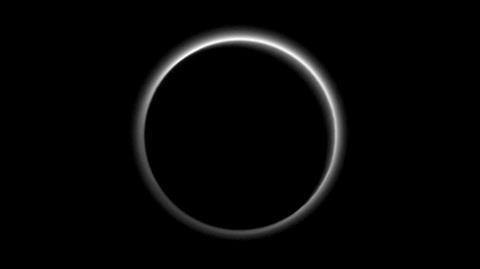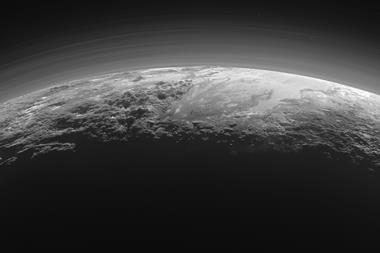Reaction of methane breakdown products are responsible for the dwarf planet’s rosy hue

Pluto’s glowering red atmosphere may be harbouring a complex concoction of hydrocarbons, according to the latest images from Nasa’s New Horizons spacecraft.
The space probe was sent to study Pluto and the Kuiper belt, an outlying region of the solar system, in 2006. Earlier this month, Nasa released the first high resolution image of Pluto’s mountainous surface following New Horizons’ closest approach at approximately 7750 miles above the surface.
Seven hours after it had snapped these initial shots and begun its journey deep into the Kuiper belt, the probe imaged Pluto in silhouette. The picture shows an atmospheric haze that stretches at least 80 miles above the surface.
Nasa believes this rarefied atmosphere forms when sunlight stimulates the creation of complex hydrocarbons, such as ethylene and acetylene, from the breakdown of methane. These compounds fall to colder regions and condense into a hazy mist of icy particles. Further bombardment by the sun’s rays converts this mist into tholins, which give Pluto its characteristic red hue.












No comments yet